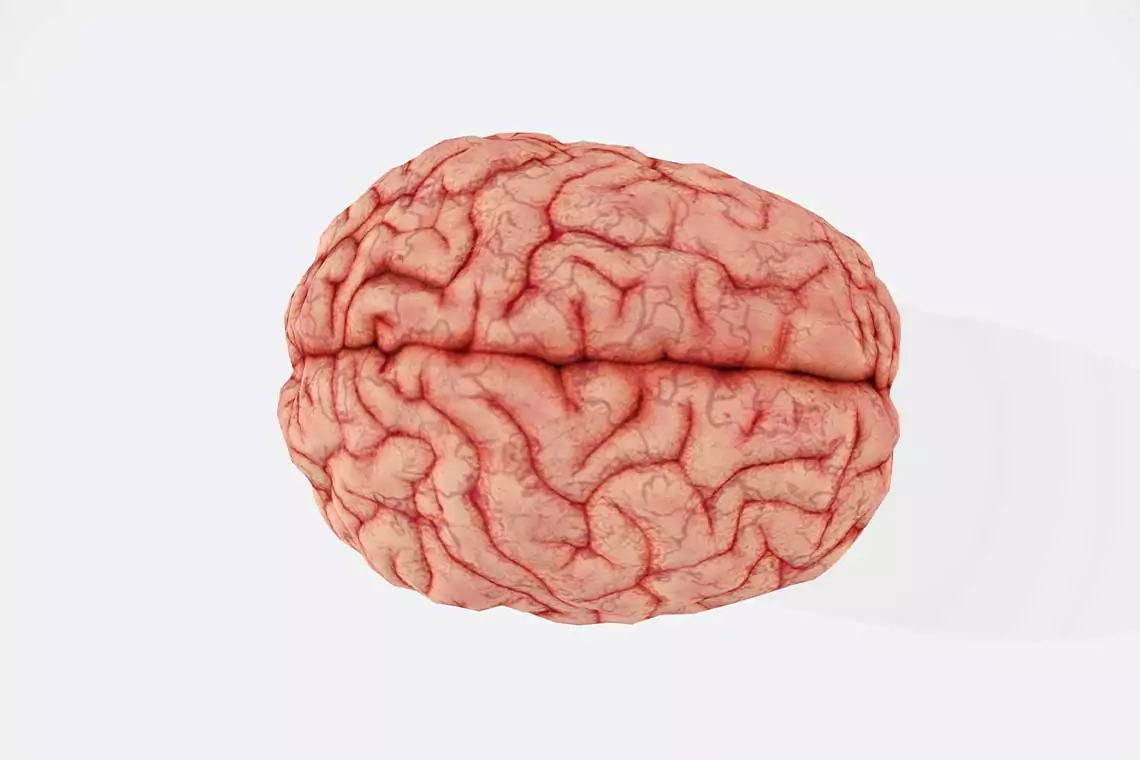Informational
What Is The Endocannabinoid System?
The endocannabinoid system (ECS) is a neural network that helps regulate cognitive and emotional processes within the central nervous system. The ECS is an integral system in the human body and can affect behavior, mood disorders, and neurological conditions such as epilepsy. The ECS is also widespread throughout the nervous system and other body parts.
Its receptors and signaling pathways are active in various areas, including the male and female reproductive systems and the urologic and gastrointestinal systems. The ECS also influences certain conditions, such as mental health conditions, epilepsy, and specific gastrointestinal issues.
Understanding the ECS can provide insights into how our bodies work and how certain conditions can be treated. In this blog, we’ll explore the ECS, how it functions, and why it’s essential for our health and well-being.
Table of Contents:
What is the Endocannabinoid System (ECS)?
The ECS, or endocannabinoid system, is a complex network of chemical signals and cellular receptors in our brains and bodies. Researchers studying THC, a well-known cannabinoid found in cannabis, discovered it in the early 1990s. While cannabinoids are known for their relation to cannabis plants, our bodies actually produce endocannabinoids, which are structurally very similar to the cannabinoids found in plants.
Many people are familiar with the transmitter systems in our bodies, like the sympathetic nervous system, which triggers our fight-or-flight response. However, fewer are aware of the more recently discovered endocannabinoid system (ECS). This is surprising given the ECS’s crucial role in nearly every aspect of our daily functioning.
What Does the ECS Do?
The ECS contributes to the human body’s homeostasis, which is the stability of your internal environment, restoring balance due to external stimulus.
Current research has linked the ECS to various processes, including:
- Appetite and Digestion
- Metabolism
- Chronic Pain
- Inflammation and Other Immune System Responses
- Mood
- Learning and Memory
- Motor Control
- Sleep
- Cardiovascular System Function
- Muscle Formation
- Bone Remodeling and Growth
- Liver Function
- Reproductive System Function
- Stress
- Skin and Nerve Function
How Does the ECS Work?
The ECS is present and active in your body even if you don’t use cannabis. The ECS operates through three main components: endocannabinoids, receptors, and enzymes.
Endocannabinoids
Endocannabinoids, or endogenous cannabinoids, are molecules produced by your body. They’re produced in the brain, muscle, and other fatty tissue. These endocannabinoids help maintain internal balance by ensuring various functions run smoothly. However, since your body produces them on demand, typical levels for each are typically hard to define.
Two key endocannabinoids are:
- Anandamide (AEA) – Affects hunger signals, sleep, and pain modulation.
- 2-Arachidonoylglycerol (2-AG) – Regulates neurological activity.
Receptors
These receptors are distributed throughout the body, and the endocannabinoids naturally created by the body bind to them to signal an action the ECS needs to take.
The brain’s CB1 receptors, a type of “cannabinoid” receptor, are more numerous than many other receptor types. They are predominantly found in the central nervous system, which involves the brain and spinal cord, but they can also be found in the brain, lungs, liver, and kidneys. These receptors act like traffic controllers, managing the levels and activities of most other neurotransmitters. They regulate various functions by providing immediate feedback and adjusting activities like hunger, temperature, or alertness as needed.
To activate these receptors, our bodies produce endocannabinoids, which are structurally similar to compounds found in the cannabis plant. The first discovered endocannabinoid was anandamide, derived from the Sanskrit word “ananda,” meaning bliss. So, we all have small cannabis-like molecules in our brains. The cannabis plant, which humans have used for about 5,000 years, exerts its effects by interacting with this ancient cellular system.
The other cannabinoid receptor type, the CB2 receptor, is primarily located in the peripheral nervous system – in nerves that branch off the spinal cord to the rest of the body – particularly in immune and hematopoietic cells. CB2 receptors are crucial for regulating immune function and play a significant role in controlling intestinal inflammation, contraction, and pain in inflammatory bowel conditions. These receptors are particularly promising targets for drug development because they do not produce the high associated with stimulating CB1 receptors.
Enzymes
Enzymes play a crucial role in breaking down endocannabinoids after they’ve completed their function.
The two main enzymes responsible for this are:
- Fatty acid amide hydrolase (FAAH) – Breaks down anandamide (AEA)
- Monoacylglycerol lipase (MAGL) – Typically breaks down 2-arachidonoylglycerol (2-AG)

Photo by Kimzy Nanney on Unsplash
Why the ECS is Important in Learning and Memory
Research suggests that the ECS is crucial for learning and memory. One clear sign is the temporary short-term memory disruption caused by high doses of cannabis. Studies have also shown how THC (the psychoactive ingredient in cannabis) impacts short-term memory and alters brain activity patterns.
In his book The Botany of Desire, Michael Pollan notes that forgetting is essential for brain function, as it prevents overload from constant sensory input. He hypothesizes that cannabis aids in this forgetting process and could be why humans have cultivated cannabis for thousands of years. The ECS’s role in forgetting offers potential treatments for PTSD, where intrusive, distressing memories cause severe symptoms.
This is a relatively recent area of study, and research is ongoing as to how the memory of long-term cannabis users is potentially affected by their usage. While initially thought to have strictly adverse effects on cognition, this research is crucial to potentially opening gateways into how cannabis use could positively impact cognition.
What Is Endocannabinoid Deficiency?
The theory of clinical endocannabinoid deficiency (CECD) suggests that low levels of endocannabinoids or dysfunction in the ECS might contribute to the development of certain conditions.
A 2016 article reviewed over a decade of research on this topic and suggested that CECD might explain why some people develop conditions like migraines, fibromyalgia, and irritable bowel syndrome (IBS). Without a clear underlying cause, these conditions often resist treatment and sometimes occur together.
If CECD does play a role in these conditions, then targeting the ECS or boosting endocannabinoid production might be the key to effective treatments. This only bolsters the idea that cannabis could have medicinal properties. However, more research is needed to confirm this theory.
How Does THC Interact with the ECS?
Tetrahydrocannabinol (THC) is one of the primary cannabinoids in cannabis and is responsible for the famous “high” sensation.
When THC enters the body, it interacts with the ECS by binding to its receptors, much like endocannabinoids. However, THC is unique because it can bind to both CB1 and CB2 receptors, allowing it to affect various bodily and mental functions.
This interaction results in various effects, some beneficial and some not. For instance, THC can help reduce pain and stimulate appetite, but it can also cause paranoia and anxiety in some individuals.
Currently, researchers are exploring ways to create synthetic THC cannabinoids that interact with the ECS to produce only the beneficial effects without the undesirable side effects.
How Does CBD Interact with the ECS?
Cannabidiol (CBD) is another primary cannabinoid found in cannabis. Unlike THC, CBD doesn’t produce a “high” and generally doesn’t cause adverse effects.
Experts are still figuring out exactly how CBD interacts with the ECS, but what is known is that CBD doesn’t bind to CB1 or CB2 receptors as THC does.
Many researchers believe that CBD works by preventing the breakdown of endocannabinoids, allowing them to have a more significant impact on the body. Others suggest that CBD might bind to a yet-to-be-discovered receptor.
Although the exact mechanisms are still being studied, research indicates that CBD can help with pain, nausea, and various symptoms related to multiple conditions.
Final Thoughts
The ECS is crucial for maintaining internal stability. However, much about it remains unknown. As researchers uncover more about the ECS, it could unlock new treatments for various conditions.
Initially, ECS research aimed to understand and criticize an illegal drug. However, it has since evolved into a comprehensive exploration of a complex system that influences learning, emotions, motivation, and bodily balance. This is the beginning of a significant era in discovering how the ECS works and developing new treatments for some of the most challenging diseases. The potential breakthroughs in understanding and utilizing the ECS are incredibly promising and exciting.
(Disclaimer reminder: This article is not medical advice. It is based on anecdotal user experience alone. If you are thinking about incorporating cannabis (delta-8 THC, delta-9 THC, CBD, etc) into your medicinal routine, please consult a healthcare professional. Do not stop taking any prescribed medications without first consulting your doctor.)
Disclaimer: This article reflects the laws of the United States at the time it was written. Because cannabis laws in the United States laws are subject to change at any time, please make sure that you are always staying up to date on your federal, state, and local county’s cannabis laws. Additionally, we are NOT encouraging anyone to break the law––we are simply showing people ways to legally and discreetly bring their cannabis products along with them on their travels so that they may have access to those products when they reach their intended destination.



